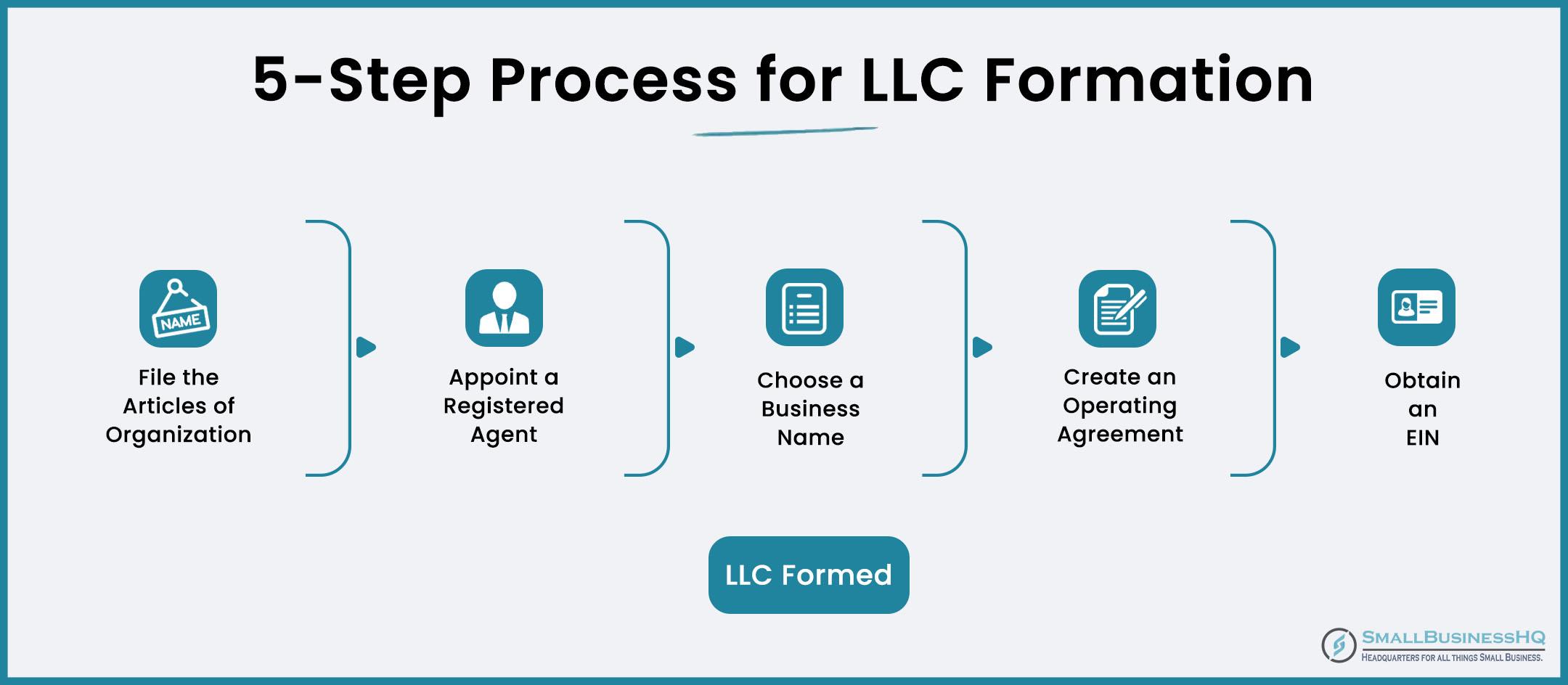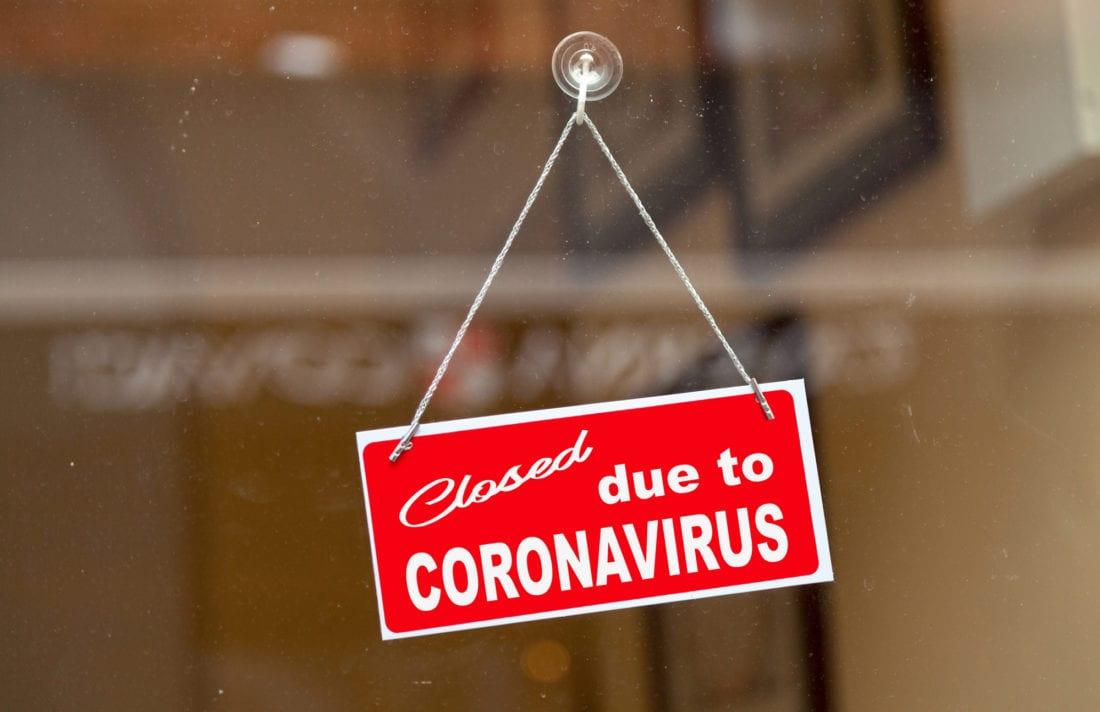
In the fast-paced world of innovation and technology, the term “proof of concept” (PoC) often pops up, but what does it really mean? If you’ve ever had a great idea but felt overwhelmed by the steps needed to bring it to life, understanding a PoC could be your golden ticket. Think of it as a crucial stepping stone between a sparkling idea and a fully realized project. In this article, we’ll break down everything you need to know about proof of concept—from its definition and importance to how you can create one that effectively showcases your vision. Whether you’re an entrepreneur, a developer, or just someone curious about the world of projects and prototypes, this guide will equip you with the knowledge you need to get started on your journey. So, let’s dive in and unlock the potential of your next big idea!
Understanding the Basics of Proof of Concept
When diving into the world of innovation and product development, understanding a proof of concept (PoC) is crucial. A PoC is essentially a demonstration, designed to validate the feasibility of a concept or idea. It serves as a preliminary step that can help entrepreneurs and teams gauge whether their vision is viable before fully committing resources.
At its core, a PoC aims to establish whether a certain idea can be turned into reality. This typically involves creating a prototype or model that showcases the core functionalities of the proposed solution. Unlike a finished product, a PoC doesn’t need to be polished; it just needs to illustrate the concept effectively.
Consider the following key aspects when developing a proof of concept:
- Clear Objectives: Define what you want to achieve with your PoC. Be specific about the problems you aim to solve.
- Target Audience: Identify who will benefit from your idea. Understanding your audience can guide your PoC’s design.
- Resource Allocation: Determine what resources—time, money, and personnel—you can allocate to develop your PoC.
- Feedback Mechanism: Set up a system to gather feedback from stakeholders and potential users to refine your concept further.
Creating a successful PoC can be broken down into a few essential steps. Here’s a simple table to illustrate the process:
| Step | Description |
|---|---|
| Research | Conduct a thorough analysis of the market and existing solutions. |
| Design | Create a rough design or wireframe outlining the functionalities of your concept. |
| Development | Build a working prototype that can demonstrate your idea in action. |
| Testing | Test your PoC with real users to gather feedback and insights. |
| Iteration | Refine the concept based on feedback to improve its viability. |
Once you have your PoC, it becomes a powerful tool in discussions with potential investors or stakeholders. It provides tangible proof that your idea has merit and can lead to a more informed decision-making process. This can dramatically increase your chances of securing funding or support.
Moreover, a proof of concept is not just about convincing others; it also helps you identify potential challenges early on. By testing the waters, you can discover technical constraints or market limitations that may not have been obvious at the outset. This proactive approach allows for adjustments before you dive into full-scale development.
a proof of concept is an invaluable step in the innovation lifecycle. It bridges the gap between theory and practice, providing clarity and direction. With a well-executed PoC, you can ensure that your idea is not only viable but also aligned with market needs and expectations.
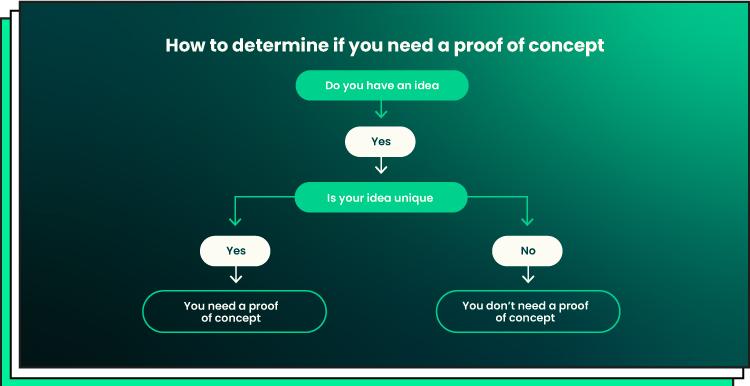
Why a Proof of Concept Matters for Your Project
Embarking on a new project can be both exciting and daunting. One of the most critical steps in the early stages is developing a Proof of Concept (PoC). This essential tool serves as a demonstration of the feasibility of your idea, helping transform abstract concepts into tangible outcomes.
Here’s why having a PoC can be a game-changer for your project:
- Validation of Ideas: A PoC allows you to test the viability of your concept in real-world scenarios, ensuring that your idea resonates with potential users and stakeholders.
- Risk Mitigation: By identifying potential flaws early on, a PoC helps to minimize risks. You can address challenges before investing significant resources into full-scale development.
- Attracting Stakeholders: A well-executed PoC provides solid evidence of your project’s potential and can attract investors, partners, and customers who may be hesitant without tangible proof.
- Guiding Development: The feedback garnered from a PoC can offer invaluable insights that guide the subsequent phases of development, ensuring a more focused and user-centered approach.
Furthermore, a proof of concept acts as a communication tool that clearly articulates your vision. It bridges the gap between technical teams and non-technical stakeholders, fostering a shared understanding of the project’s objectives. This clarity can streamline decision-making processes, making it easier to align resources and strategies.
To illustrate the impact of a PoC on project success, consider a comparative table of outcomes from projects with and without a PoC:
| Project Aspect | With PoC | Without PoC |
|---|---|---|
| Investment Efficiency | Higher | Lower |
| Stakeholder Confidence | Increased | Decreased |
| Time to Market | Shorter | Longer |
| Feature Relevance | More Aligned | Less Aligned |
investing the time and resources into developing a PoC can yield significant returns. It not only streamlines your project but also enhances its chances of success in an increasingly competitive landscape. Whether you’re seeking funding or simply want to ensure that your idea can stand the test of reality, a well-crafted proof of concept is an indispensable asset.
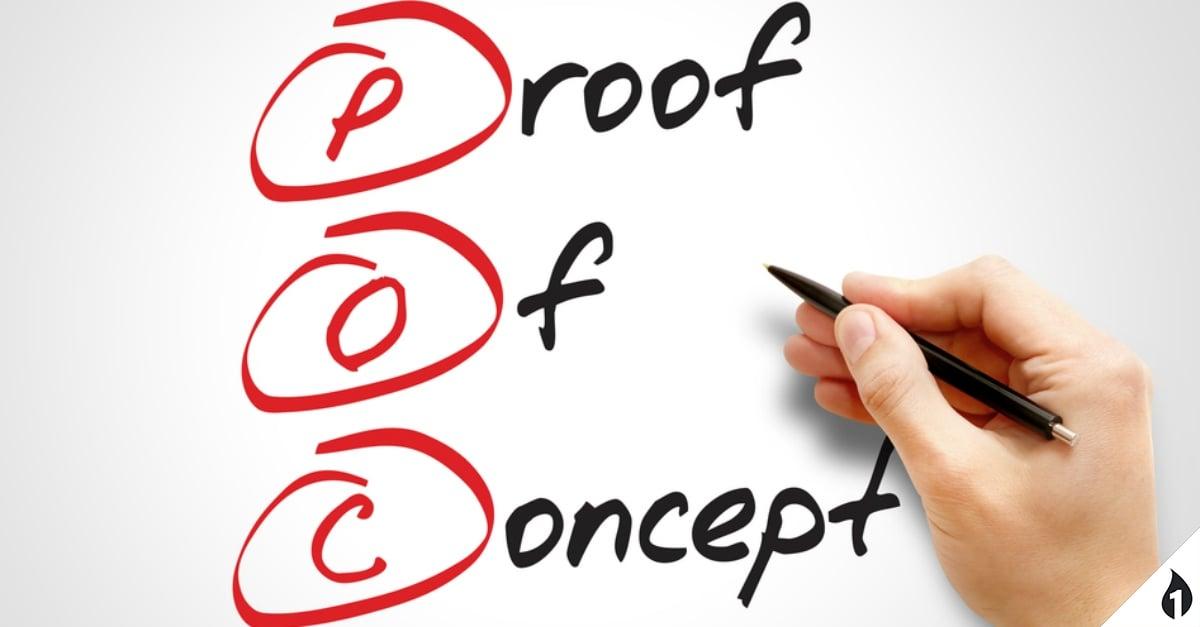
Key Components of an Effective Proof of Concept
Creating a successful proof of concept (PoC) requires a carefully crafted approach. To ensure your PoC effectively demonstrates the feasibility of your idea, several key components must be in place.
Clear Objectives: Before diving into development, it’s crucial to define what you want to achieve. Establishing clear, measurable objectives will guide your efforts and provide benchmarks to evaluate success. Ask yourself:
- What problem does my idea solve?
- What are the specific goals of the PoC?
- How will I measure success?
Target Audience: Understanding your target audience is essential for tailoring your PoC. Research the users or stakeholders who will interact with your concept. Consider their needs and pain points, and ensure your PoC addresses these effectively. This alignment increases the chances of buy-in when presenting your concept.
Minimal Viable Product (MVP) Development: Your PoC should focus on creating a minimal viable product that encapsulates the core functionality of your idea. This means stripping away unnecessary features and honing in on the aspects that matter most. Keep in mind:
- What features are essential to demonstrate the concept?
- How can I keep the development process lean and efficient?
- What technologies will best showcase my PoC?
Prototype and User Feedback: Building a prototype is a critical step in your PoC process. Once developed, it’s important to gather feedback from real users. Conduct usability testing sessions to observe how users interact with your prototype. Their insights can reveal strengths and weaknesses that you may not have anticipated, allowing for improvements before a full-scale launch.
Documentation and Results Presentation: Documenting your process and the results of your PoC is vital. This not only helps to reflect on what worked and what didn’t but also serves as a tool for presenting your findings to stakeholders. Consider using a structured format, like the table below, to summarize key results:
| Feature Tested | User Feedback | Next Steps |
|---|---|---|
| Core Functionality | Highly Positive | Scale up development |
| UI Design | Needs Improvement | Revise design based on feedback |
| Performance | Acceptable | Monitor and optimize |
Iterative Process: remember that a PoC is not a one-and-done deal. It’s an iterative process that should evolve based on feedback and findings. Be open to making adjustments and re-testing; this flexibility can lead to a stronger final product. Every iteration brings you closer to a solution that meets the needs of your audience and stands up in the market.
Distinguishing Between Proof of Concept and Prototype
When embarking on a new project, understanding the difference between a proof of concept (PoC) and a prototype is crucial. While both play vital roles in the development process, they serve distinct purposes and offer unique insights into your idea’s feasibility.
A proof of concept is primarily about validating an idea. It’s a demonstration designed to show that a concept is feasible and has potential for success. This phase is often brief and focuses on answering specific questions, such as:
- Is the idea viable?
- Can the technology support the solution?
- Will it meet the target audience’s needs?
In contrast, a prototype is a more developed version of the idea that provides a tangible representation of the concept. It’s often interactive and allows users to engage with the product in a way that highlights its usability and functionality. Key characteristics include:
- Visual and functional representation: Prototypes often look and behave like the final product.
- User testing: They are used to gather user feedback to refine the product.
- Iterative development: Prototypes can undergo multiple revisions based on user insights.
To illustrate the differences more clearly, consider the following table:
| Aspect | Proof of Concept | Prototype |
|---|---|---|
| Purpose | Validate feasibility | Demonstrate functionality |
| Development Stage | Early stage | Mid to later stage |
| User Interaction | Minimal or none | High |
| Cost | Generally lower | Usually higher |
Identifying which phase your project is in will help you allocate resources effectively. If you’re still exploring ideas, a proof of concept is your go-to approach. However, once you’ve validated your concept, moving to the prototype phase is essential for refining your solution based on user feedback.
Remember that both stages are integral to the product development lifecycle. By recognizing their distinct roles, you can ensure that your project not only starts on solid ground but also evolves into a successful final product that resonates with users.
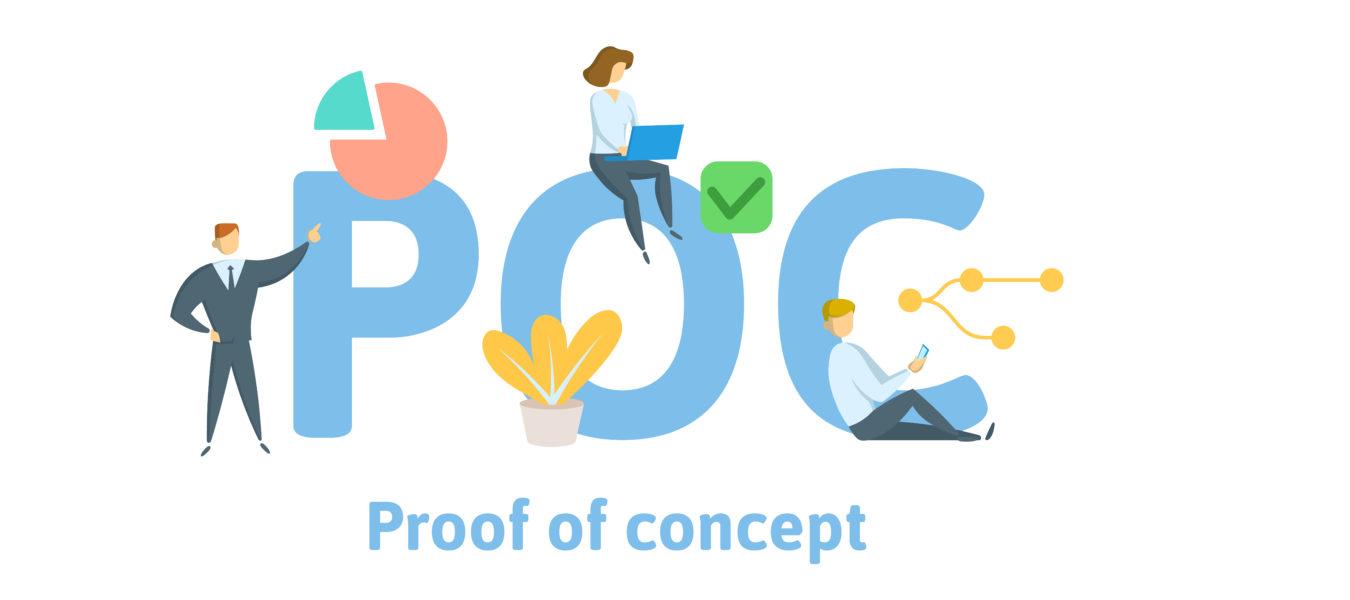
How to Identify the Right Goals for Your Proof of Concept
Identifying the right goals for your proof of concept (PoC) is a pivotal step in ensuring its success. By clarifying what you want to achieve, you can guide your efforts more effectively and measure your outcomes. Here are some strategies to help you pinpoint those goals:
- Understand Stakeholder Needs: Begin by engaging with key stakeholders to gather insights on their expectations. This dialog can reveal critical areas of interest and concern, helping you align your PoC with business objectives.
- Define Success Metrics: Establish what success looks like for your PoC. Is it user adoption, cost reduction, or improved efficiency? Be specific about the metrics you will use to evaluate performance.
- Consider Technical Feasibility: Assess the technical aspects of your PoC. What resources do you have at your disposal? Understanding your team’s capabilities will inform realistic goal-setting.
- Focus on User Experience: If your PoC involves a product or service, prioritize user experience. Goals should reflect what you want users to feel or achieve when interacting with your solution.
To further clarify your goals, consider creating a simple table to visualize them. This can help in comparing different objectives and prioritizing them based on impact and feasibility.
| Goal | Description | Priority Level |
|---|---|---|
| User Adoption | Measure the number of users who engage with the PoC within a specific timeframe. | High |
| Cost Reduction | Determine how much the PoC can save compared to current processes. | Medium |
| Technical Validation | Confirm that the technology works as intended under real-world scenarios. | High |
| Feedback Collection | Gather qualitative feedback from users for future improvements. | Medium |
Another essential aspect is to stay adaptable. The nature of innovation often leads to unexpected findings during the PoC process. Therefore, regularly review and adjust your goals based on feedback and results. This flexibility can significantly enhance your project’s relevance and effectiveness.
don’t forget the importance of communication. Share your goals with your team to ensure everyone is aligned and understands their role in achieving these objectives. A cohesive effort will drive your project forward and increase the chances of a successful proof of concept.
Crafting a Realistic Timeline and Budget
Creating a realistic timeline and budget is essential for the success of your proof of concept (PoC). A well-thought-out plan not only clarifies your objectives but also aligns your team and resources effectively. Here are some key considerations to keep in mind:
- Define Clear Milestones: Break down the project into manageable phases, each with specific goals. This allows for tracking progress and reassessing your approach as needed.
- Estimate Time Accurately: Consider all aspects of the project, from research and development to testing and feedback. Aiming for precision in your estimates can help you avoid unexpected delays.
- Involve Stakeholders: Engage team members and stakeholders in the planning process. Their insights can help you identify potential challenges and opportunities early on.
When it comes to budgeting, it’s crucial to outline all potential costs associated with your PoC. This includes:
- Personnel Costs: Consider salaries, benefits, and any additional resources you may need to hire.
- Technology Investments: Whether it’s software, hardware, or licenses, factor in all technological needs.
- Testing and Validation: Allocate funds for rigorous testing to ensure your PoC meets the required standards.
To help visualize your timeline and budget, consider using a simple table format. Below is an example that outlines a basic overview of estimated timelines and budget allocations:
| Phase | Estimated Timeframe | Estimated Budget ($) |
|---|---|---|
| Initial Research | 2 Weeks | 1,000 |
| Development | 4 Weeks | 5,000 |
| Testing | 2 Weeks | 2,000 |
| Feedback & Iteration | 3 Weeks | 1,500 |
By laying out a clear timeline and budget, you’re not only setting a roadmap for your project but also providing a transparent view for stakeholders. This transparency fosters trust and encourages collaboration, increasing the likelihood of achieving your PoC goals.
Remember to build in some flexibility within your budget and timeline to accommodate any unforeseen challenges. It’s better to plan for the unexpected than to scramble for solutions mid-project. By crafting a realistic and adaptable plan, you’re setting the stage for a successful proof of concept that delivers valuable insights and paves the way for future developments.

Essential Steps to Develop Your Proof of Concept
When embarking on the journey to create a proof of concept (PoC), it’s crucial to follow a structured approach to ensure that your idea transitions smoothly from concept to reality. The first step involves defining your objectives. What do you aim to accomplish with your PoC? Clear goals will guide the entire development process, helping you stay focused and aligned with your vision.
Next, you should conduct thorough research. This includes understanding the market, identifying your target audience, and analyzing competitors. Gather insights that will help you refine your concept and determine its viability. Engaging with potential users during this phase can also provide valuable feedback and help validate your ideas.
Once you have a solid grasp of your goals and market landscape, it’s time to outline your key features. Focus on the core functionalities that will demonstrate the concept’s value. Less is often more; prioritize essential features that showcase your solution’s unique selling points. This will not only simplify development but also help in creating a compelling narrative for stakeholders.
The next step is to create a visual representation of your PoC. Whether it’s a wireframe, a prototype, or a storyboard, visual aids can significantly enhance understanding and communication. Tools like Sketch, Figma, or even basic PowerPoint presentations can help bring your concept to life, making it easier for others to grasp your vision.
With visuals in hand, it’s time to develop your PoC. This phase may involve coding, assembling a team of developers, or using no-code platforms to build a functional prototype. Focus on speed and agility; the goal here is not to create a polished final product but rather a working model that demonstrates your concept’s potential.
After development, testing is crucial. Gather a group of users to interact with your PoC and collect their feedback. This stage will help identify any bugs, usability issues, or feature gaps. Be prepared to iterate based on this feedback, refining your model until it aligns more closely with user expectations and needs.
compile your findings and prepare to present your PoC to stakeholders. Create a compelling narrative that includes your research insights, the development process, user feedback, and future recommendations. This presentation should not only highlight the functionality of your PoC but also articulate its potential impact and the next steps for further development.
| Step | Description |
|---|---|
| Define Objectives | Establish clear goals for your PoC. |
| Conduct Research | Analyze market and competitors; gather user feedback. |
| Outline Key Features | Identify essential functionalities for the PoC. |
| Create Visuals | Develop prototypes or wireframes to illustrate the concept. |
| Develop PoC | Build a functional model quickly to showcase your idea. |
| Testing | Collect user feedback and identify areas for improvement. |
| Present PoC | Prepare a compelling narrative for stakeholders. |

Tips for Gathering and Analyzing Feedback
Gathering Insights
When embarking on the journey of gathering feedback, it’s crucial to approach your audience with openness and clarity. To get the most valuable insights, consider these strategies:
- Choose the right platforms: Utilize tools like surveys, interviews, or focus groups that align with your audience’s preferences.
- Keep it simple: Craft straightforward, concise questions that encourage honest responses without overwhelming participants.
- Timing is key: Collect feedback at strategic points in your project to capture the most relevant insights, such as after presentations or product launches.
Crafting the Right Questions
The way you frame your questions can significantly influence the type of feedback you receive. Here are some tips to enhance your question formulation:
- Use open-ended questions: Encourage detailed responses by asking questions like “What did you find most valuable about this concept?”
- Include specific prompts: Guide respondents with targeted inquiries about features, usability, or potential improvements.
- Be neutral: Avoid leading questions that might sway responses; instead, aim for neutrality to get authentic feedback.
Analyzing Feedback Effectively
Once you’ve gathered feedback, the next step is to analyze it for actionable insights. Here are some effective methods to do just that:
- Look for patterns: Identify common themes or recurring suggestions that can inform your next steps.
- Prioritize responses: Use a ranking system to determine which feedback is most crucial to your project’s success.
- Engage stakeholders: Involve team members in the analysis process to gain diverse perspectives on the feedback collected.
Utilizing Feedback for Continuous Improvement
Feedback is not just a one-time collection; it should be an ongoing process. Here’s how to leverage findings for continuous improvement:
| Action | Purpose |
|---|---|
| Implement Changes | Address feedback directly to show responsiveness and enhance user experience. |
| Follow Up | Reach out to participants to share how their feedback influenced changes, fostering a sense of community. |
| Iterate Regularly | Make feedback collection a regular part of your process to ensure continuous alignment with user needs. |
Conclusion
Gathering and analyzing feedback is a powerful tool that can transform your proof of concept into a refined, user-centered solution. By following these tips, not only will you enhance your project’s quality, but you will also build stronger relationships with your stakeholders, ensuring that their voices are heard and valued along the way.
How to Present Your Proof of Concept to Stakeholders
When it’s time to showcase your proof of concept (PoC) to stakeholders, the way you present your ideas can be just as crucial as the ideas themselves. To win over your audience, remember that clarity and engagement are key. Start with a well-structured presentation that guides your stakeholders through your thought process. Use visuals to illustrate your points and keep the audience interested.
Begin by clearly defining the problem your proof of concept addresses. Set the stage by explaining why this issue matters to the stakeholders. They need to understand the significance of what you are proposing. Use compelling statistics or anecdotes to paint a vivid picture of the challenges at hand.
Next, move on to the solution. Present your concept in a straightforward manner. Avoid jargon and complex terminology that might confuse your audience. Instead, make sure to highlight:
- Key Features: What are the main functionalities of your proposed solution?
- Benefits: How will this concept improve business outcomes or solve the initial problem?
- Implementation Plan: What are the next steps if they decide to move forward?
Consider using a visual demonstration of your proof of concept. This could be a live demo, a video walkthrough, or an interactive prototype. Engaging your stakeholders visually can help them grasp the concept more effectively. If possible, provide a before-and-after comparison to showcase the impact your solution can have.
As you present, be sure to invite feedback and questions. This not only shows that you value their input but also helps clarify any uncertainties they may have. Prepare to address potential concerns by anticipating questions that might arise. Having well-thought-out responses ready demonstrates your thorough understanding of both the concept and its implications.
wrap up your presentation with a strong call to action. Reinforce the urgency of the situation and the potential benefits of moving forward with your proof of concept. Make it clear how they can take the next steps, whether that’s setting up a follow-up meeting, approving a budget, or simply providing their initial thoughts.
| Aspect | Importance |
|---|---|
| Clarity | Ensures the audience understands your message |
| Engagement | Keeps stakeholders interested and involved |
| Feedback | Encourages a collaborative approach to the idea |
| Call to Action | Drives the next steps in the process |
With the right preparation and presentation, your proof of concept can become a compelling case that resonates with your stakeholders, paving the way for future collaboration and success.
Common Pitfalls to Avoid When Creating a Proof of Concept
When diving into the realm of proof of concept (POC), it’s easy to overlook key elements that can make or break your project. Avoiding common pitfalls will help ensure that your POC is a resounding success, rather than a learning experience fraught with mistakes. Here are some crucial missteps to sidestep:
- Neglecting Clear Objectives: One of the biggest traps is not defining what success looks like. Without clear, measurable objectives, it becomes challenging to evaluate your POC’s effectiveness. Set specific goals that align with your broader business strategy.
- Overcomplicating the Design: A POC should be simple and focused. Don’t get carried away with features or extensive functionalities. Keep it lean and aligned with the core problem you’re trying to solve.
- Ignoring Stakeholder Input: Engaging stakeholders early on is essential. Failing to gather their insights can lead to a misaligned POC that doesn’t address the real needs of the users or the business.
- Skipping the User Feedback Loop: The purpose of a POC is to test ideas, so why would you skip the feedback? Make sure to gather input from users and make iterative improvements based on their experiences.
In addition to these common missteps, consider the following aspects that can derail your POC:
- Inadequate Budgeting: Many teams underestimate the resources needed for a successful proof of concept. Ensure you allocate enough budget to cover all necessary aspects, including technology, personnel, and time.
- Failing to Document Learnings: Every POC will yield valuable insights. Failing to document these learnings means you might repeat the same mistakes or miss out on valuable knowledge that could inform future projects.
Here’s a quick reference table summarizing these pitfalls and how to avoid them:
| Pitfall | How to Avoid |
|---|---|
| Neglecting Clear Objectives | Define measurable goals upfront. |
| Overcomplicating the Design | Keep it simple and focused. |
| Ignoring Stakeholder Input | Engage stakeholders early for insights. |
| Skipping User Feedback Loop | Collect feedback and iterate. |
| Inadequate Budgeting | Allocate enough resources. |
| Failing to Document Learnings | Keep a record of insights gained. |
By steering clear of these pitfalls, you’ll be well on your way to creating a POC that not only meets expectations but also lays the groundwork for future success. Remember, a proof of concept is about validating ideas, learning from the process, and refining your approach for the next stages of development.
Real-Life Examples of Successful Proof of Concepts
Real-life proof of concepts (POCs) have paved the way for innovative solutions across various industries. These projects demonstrate that ideas can be transformed into tangible results, ultimately fostering confidence in concepts that may have initially seemed risky or untested. Here are a few notable examples that showcase the power and potential of successful POCs.
1. Spotify’s Custom Playlists
Spotify wanted to enhance user experience by personalizing playlists. To test this idea, they launched a POC that allowed a select group of users to receive custom playlists based on their listening habits. The result? An almost immediate uptick in user engagement and satisfaction.
2. Airbnb’s Instant Book Feature
Airbnb implemented a POC to test the feasibility of an ‘Instant Book’ feature, which allowed users to book accommodations immediately without waiting for host approval. This POC not only streamlined the booking process but also increased conversion rates by over 20%. With the positive feedback, Airbnb rolled out the feature globally.
3. Tesla’s Autopilot
Tesla introduced its Autopilot feature as a POC to demonstrate the viability of semi-autonomous driving. By deploying the feature to a limited number of vehicles, they gathered invaluable data and user feedback, which led to continuous improvements. Today, Autopilot is one of the key differentiators for Tesla in the automotive market.
4. Google’s Project Loon
Initially conceived as a method to deliver internet access to underserved areas via high-altitude balloons, Project Loon started as a POC. After multiple test flights and real-world applications in disaster recovery situations, it demonstrated the potential to connect those in remote locations. The project eventually led to partnerships that expanded its reach.
5. Microsoft’s HoloLens in Retail
In an effort to revolutionize retail experiences, Microsoft developed a POC for HoloLens that allowed customers to visualize products in their home environments before making a purchase. Retail partners who participated in the pilot saw an increase in purchase rates and a decrease in returns, showcasing the effectiveness of augmented reality in shopping.
6. Table: Key Metrics of Successful POCs
| Company | POC Idea | Outcome |
|---|---|---|
| Spotify | Custom Playlists | Increased Engagement |
| Airbnb | Instant Book Feature | 20% Conversion Increase |
| Tesla | Autopilot | Data-Driven Improvements |
| Project Loon | Connectivity in Remote Areas | |
| Microsoft | HoloLens in Retail | Reduced Returns |
These examples illustrate how companies have effectively executed POCs to validate their ideas, engage customers, and create innovative solutions. By investing in proof of concepts, businesses can not only gauge the feasibility of new initiatives but also gather essential insights that can inform future development and strategy.

Leveraging Technology to Enhance Your Proof of Concept
In today’s fast-paced digital landscape, technology plays a pivotal role in transforming ideas into tangible realities, especially when it comes to developing a proof of concept (PoC). By leveraging various technological tools and platforms, organizations can not only streamline their PoC development process but also enhance its effectiveness and reliability.
One of the first steps in utilizing technology for your PoC is to adopt collaborative tools. These platforms enable team members to work together in real time, regardless of their location. A few examples include:
- Trello for project management
- Slack for communication
- Google Docs for document collaboration
Next, consider using prototyping tools that allow you to create visual and functional representations of your idea without extensive coding. Tools like Figma or Adobe XD can be invaluable for designing user interfaces and gathering feedback early in the process.
Furthermore, incorporating data analytics into your PoC can significantly enhance its credibility. By analyzing user behavior and feedback through tools like Google Analytics or Hotjar, you can gather insights that inform necessary adjustments, making your PoC more aligned with market needs. Consider using a table to visualize key metrics:
| User Behavior Metric | Importance | Tool |
|---|---|---|
| Page Views | Shows interest level | Google Analytics |
| Click-Through Rate | Indicates engagement | Hotjar |
| User Feedback | Provides qualitative insights | Surveys |
Don’t underestimate the power of automation in your PoC development. Automating repetitive tasks with tools like Zapier can save time and reduce the likelihood of human error. This efficiency allows your team to focus on refining the concept rather than getting bogged down by administrative duties.
embracing emerging technologies such as artificial intelligence and machine learning can give your PoC a competitive edge. For instance, using AI-driven analytics to predict user preferences can help you tailor your offering and enhance its appeal.
By strategically integrating these technological elements into your proof of concept, you’ll not only expedite the development process but also create a more robust and market-ready product that stands out in today’s competitive landscape.
Next Steps After Your Proof of Concept Is Complete
Congratulations on completing your proof of concept (PoC)! This is a significant milestone that demonstrates the viability of your idea or product. Now, it’s time to strategize your next steps to ensure you capitalize on the momentum you’ve built. Here’s what to consider moving forward:
- Analyze Feedback: Gather all the feedback from stakeholders, users, and team members who interacted with the PoC. This input is invaluable for making informed decisions on how to refine your product or service.
- Refine Your Offering: Based on the insights you’ve gathered, make necessary adjustments to your concept. This could involve tweaking functionalities, enhancing user experience, or even rethinking your value proposition.
- Develop a Roadmap: Create a clear plan to transition from the PoC to a full launch. Outline the key phases, timelines, and resources required, ensuring everyone involved understands their roles and responsibilities.
- Engage Stakeholders: Keep communication lines open with stakeholders. Present the findings from your PoC and how you plan to address any concerns. This engagement fosters trust and helps secure ongoing support.
Once you have refined your offering and engaged your stakeholders, it’s essential to move towards implementation. Here are further steps to consider:
- Build a Minimum Viable Product (MVP): Transition from your PoC to an MVP that focuses on core features to meet the needs of your target audience while minimizing development costs.
- Conduct Market Research: Validate your concept further by conducting comprehensive market research. Understand your target audience better, identify competitors, and assess demand to ensure your offering stands out.
- Plan for Scaling: As your product gains traction, think about how to scale operations. Consider production capabilities, supply chain logistics, and customer support as part of your growth strategy.
Lastly, don’t underestimate the power of marketing. As you gear up for a larger launch, consider the following:
- Build a Marketing Strategy: Create a robust marketing plan that highlights your unique selling points and outlines how you intend to reach your audience effectively.
- Leverage Social Proof: Use testimonials, case studies, and data from your PoC to build credibility. Showcase this evidence in your marketing materials to attract potential customers.
- Set Up Metrics: Establish key performance indicators (KPIs) to measure your product’s success post-launch. Track user engagement, sales, and feedback to continuously improve your offering.
Each of these steps is crucial in transforming your proof of concept into a successful product. By thoughtfully navigating this journey, you’ll position your offering for the best chance of success in the market.
Turning Your Proof of Concept into a Viable Product
Congratulations! You’ve successfully created a proof of concept (PoC) that demonstrates the feasibility of your idea. Now comes the exciting part: transforming that PoC into a viable product. This transition requires strategic planning, a solid understanding of your market, and the ability to adapt based on user feedback.
First, it’s crucial to gather insights from your PoC. Engage with users who tested your concept and solicit their feedback. This input can help you identify strengths and areas for improvement. Consider the following points:
- What features did users find most valuable?
- Were there any functionalities that confused or frustrated users?
- What additional features would they like to see?
Once you have this feedback, the next step is to refine your product. This process often involves collaborating with a team of developers and designers to translate your concept into a user-friendly experience. Consider creating a roadmap for development, which can include:
- Defining core features to prioritize
- Setting timelines for each development phase
- Allocating resources and budget effectively
Moreover, understanding your target market is essential. Conduct market research to validate your product idea and identify your potential customers. You’ll want to explore aspects like:
- Competitors and their offerings
- Market trends and demands
- Potential pricing strategies
| Aspect | Considerations |
|---|---|
| Target Audience | Age, location, preferences |
| Competitor Analysis | Features, pricing, customer feedback |
| Market Trends | Current and emerging technologies |
As you develop your product, keep testing and iterating it based on user feedback. Launching a minimum viable product (MVP) can be an effective strategy. An MVP allows you to enter the market quickly and start gathering real-world data without overcommitting resources. This iterative approach helps you refine your product before a full-scale launch.
don’t underestimate the power of effective marketing. Once you have a solid product, it’s time to create buzz. Develop a marketing strategy that highlights your unique selling proposition and addresses the pain points of your audience. Utilize social media, content marketing, and even targeted advertising to reach potential customers.
By following these steps, you can successfully navigate the transition from proof of concept to a viable product that not only meets market needs but also stands out in a competitive landscape. Embrace the journey, and remember that flexibility and responsiveness to user feedback will be key to your success.
Frequently Asked Questions (FAQ)
Q&A: What Is a Proof of Concept? Everything You Need to Know to Get Started
Q1: What exactly is a Proof of Concept (PoC)?
A: Great question! A Proof of Concept is essentially a demonstration or prototype that illustrates the feasibility of an idea or concept. It’s like a sneak peek into how a project will work in real life. Imagine you have a brilliant new app idea; a PoC helps you prove that the technology behind it is viable before you invest significant resources into development.
Q2: Why is a PoC important for my business?
A: Think of a PoC as your safety net. It reduces risk by allowing you to validate your ideas early on, saving you from costly mistakes down the line. If you can demonstrate that your concept works, you’ll find it easier to gain support from stakeholders or attract investors. Plus, it helps you identify potential challenges before they become major roadblocks.
Q3: How do I create an effective PoC?
A: Start by clearly defining your objectives. What do you want to prove? Once you have that down, outline the key features that will demonstrate your concept. Next, create a minimal version of your idea—this could be a simple prototype or a mockup. gather feedback from potential users to see how they interact with it. This iterative approach helps you refine your concept based on real-world responses.
Q4: Who should be involved in the PoC process?
A: Involve a mix of stakeholders! This typically includes your core team—developers, designers, and product managers—but don’t forget to invite potential users and investors to provide their insights. Their perspectives can help ensure that your PoC resonates with your target audience and meets market needs.
Q5: How long does it take to develop a PoC?
A: This can vary widely depending on the complexity of your idea. A simple PoC might take just a few days or weeks, while more intricate concepts could require several months. The key is to focus on speed and efficiency; remember, the goal is to validate your concept quickly, not to create a polished final product.
Q6: What are some common mistakes to avoid when creating a PoC?
A: One major pitfall is overcomplicating your PoC. Stick to the essential features that showcase your concept. Avoid getting bogged down in details that don’t directly contribute to your main objective. Also, don’t skip user feedback—ignoring this step can lead you to miss critical insights that could shape your project’s success.
Q7: Once my PoC is successful, what’s next?
A: Congrats on your success! The next step is to use the insights gained from your PoC to move into a more comprehensive development phase. This involves building a more robust product, incorporating user feedback, and possibly seeking funding or partnerships to bring your concept to market. Keep the momentum going!
Q8: Can a PoC be used in any industry?
A: Absolutely! Whether you’re in tech, healthcare, finance, or even education, a PoC can be a valuable tool. Any field where innovation is key can benefit from demonstrating a concept’s feasibility before diving into full-scale development.
Q9: How can I effectively communicate my PoC to stakeholders?
A: Keep it clear and concise! Create a compelling presentation that outlines your objectives, the process you followed, and the results you achieved. Use visuals and data to support your claims, and be prepared to answer questions. Remember, enthusiasm goes a long way—show them why your concept is worth their attention.
Q10: Any final tips for someone just getting started with PoCs?
A: Absolutely! Stay open to feedback and be ready to iterate. The PoC process is all about learning, so embrace the insights you gain along the way. And remember, each step you take is a move toward making your vision a reality. You’ve got this!
The Way Forward
As we wrap up our exploration of proof of concept, it’s clear that understanding and implementing this essential tool can be a game changer for your projects. A well-crafted POC not only helps you validate your ideas but also builds confidence among stakeholders, paving the way for successful development.
Remember, a proof of concept is more than just a formal exercise—it’s your chance to test the waters, gather invaluable feedback, and refine your vision before diving into full-scale production. So, whether you’re an entrepreneur with a groundbreaking idea, a developer looking to innovate, or a project manager guiding your team, don’t underestimate the power of a POC.
Now that you’re equipped with the knowledge you need, why not take the leap? Start sketching out your ideas, gather your team, and create a proof of concept that showcases your vision in action. Who knows? Your next big breakthrough could be just a POC away. Happy innovating!




